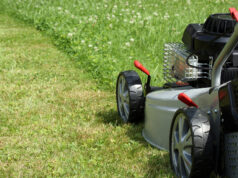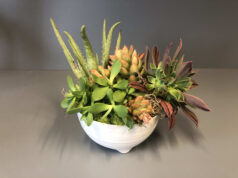
Succulents are unique to other houseplants in many different ways. They seem to be the ultimate low-maintenance houseplant, which is what many people love about them. However, low-maintenance doesn’t mean you get to completely neglect them. If you fail to care for them properly, they’re not likely to survive for too long.
This leads us to the most commonly asked question among newbie succulent owners: how much and how often should you water them?
We’ll thoroughly discuss the answer below, so keep on reading and learn how to keep your newest plant happy and thriving for the years to come!
Page Contents
The “soak and dry” method

Before we tell you how much and how often you should do it, you should learn the right method of watering your succulents. As you probably know already, succulents are prone to rotting if you overwater them. So, the best way to provide them with some H2O (without the risk of your plants rotting away) is to soak the soil, and then wait until it’s dried up to repeat the process. You can do this using a simple watering can or a squeeze bottle. Remember to avoid soaking the leaves, though, as they’re extremely sensitive to moisture.
Keep in mind that many types of these plants grow in dry areas where there’s hardly any rain, ever (think cacti!). So, they haven’t evolved to survive in overly damp conditions. Keeping the water away from their leaves is of the utmost importance. Don’t leave them outdoors if you know that there’s going to be a downpour that day.
Overall, as long as you focus on watering the soil, congrats, you’re doing it right! Get some small watering tools to make this even easier, and you’re good to go.
Water your plants only when the soil is perfectly dry
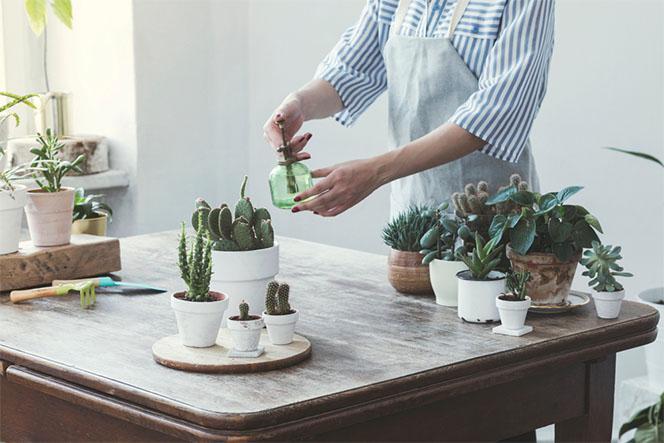
As we already mentioned before, you should never water your succulent plant until the soil has completely dried up. This mostly answers the “how often” question.
Still, remember that succulents generally don’t do well if they spend more than 2-3 days in wet soil. Keep an eye on it to ensure it gets the heat that’s necessary for it to dry. Don’t fall into the trap of watering the plant as soon as you notice the soil isn’t wet anymore. Instead, try watering in periods of 14-20 days at the most. Every plant is different, but this is certainly a good starting point.
After some time passes, you’ll be able to notice whether the plant needs more (or less) watering to thrive. If you’re a complete newbie and you’re not sure how an overwatered succulent looks, we suggest taking pictures to track your plant’s progress. It’s a good way to check whether you’re timing your watering sessions properly.
How much water does my succulent need?
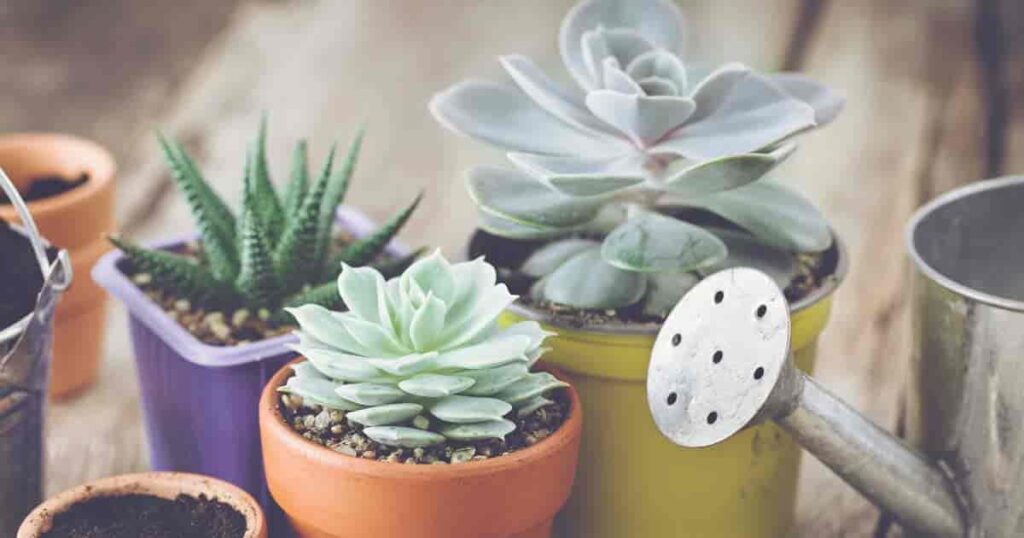
Now, this completely depends on the species and the size of the plant. As there are more than 500 succulent variants on our planet, we can’t get too specific in this article. However, doing some light googling should answer all of your questions (the power of the internet!).
Remember to ask your supplier for details on the variant you’re buying, so you know where and how to search for more info. Additionally, ask them for some basic care tips while you’re at it. Make sure you buy your plants from suppliers like succulentmarket.com, who can provide you with the necessary instructions.
Whatever you do, remember to get the right watering tools beforehand. Do NOT use a spray bottle for watering! It makes the “soak and dry” method we mentioned almost impossible to pull off, and it won’t satisfy your plant’s essential needs. Spraying some water over the succulents lowers their chances of survival, especially in the long-run!
The soil matters too

Succulents cannot survive for long in wet soil. So, they should be planted in well-draining soil that doesn’t retain moisture. The optimal soil mixture should consist of roughly 2/3 of non-organic materials (mostly rocks), and the rest should be organic (coconut coir, pine).
Besides that, make sure your plants are planted in a pot with a drainage hole. In this way, you’ll ensure your soil gets dry as quickly as possible, leaving your plants in optimal conditions to grow and thrive some more.
Again, not all succulents require the same conditions for their survival, but finding the exact soil mixture for your plant is quite easy nowadays. You can find all the info you need online in a matter of seconds!
Whatever you do, just make sure you don’t use traditional soil for your cacti or jade plants! It simply gets too wet for them to survive!
Keep a schedule
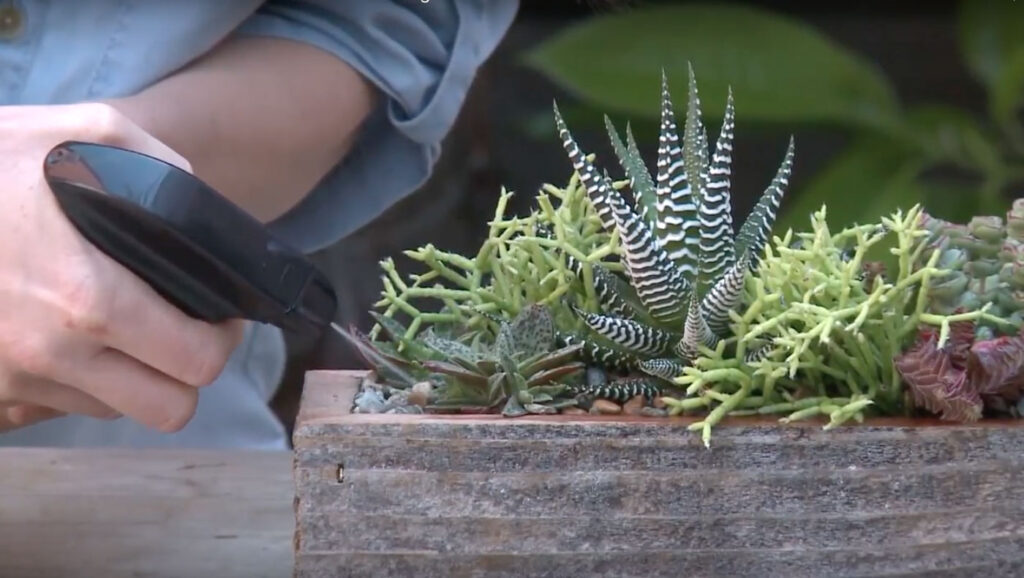
While this isn’t exactly a necessity, keeping a watering schedule makes things so much easier! You can make a schedule manually, or you can use some of those “houseplant-management apps” found at Google Play and the Apple store.
Keeping a schedule is the best way to prevent yourself from forgetfully overwatering your plants. Also, it gives you a better idea of whether you should increase the frequency of watering or lower it instead. Like we mentioned before, a good idea is to take occasional pics of your new favorite houseplant to keep you well-informed on how it reacts to your watering schedule.
Overall, as long as you keep track of how frequently you’re watering the plant, you’ll be able to optimize the watering schedule to your plant’s needs. So, become a succulent whisperer and start keeping a watering schedule!
The bottom line
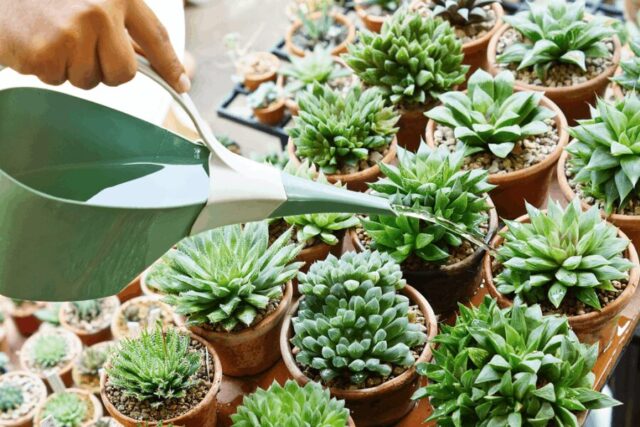
Some succulents can live for more than 50 years if you care for them properly. They’re an excellent addition to your home as they can purify the air around you, and taking care of them is the perfect way to de-stress!
All in all, as long as you don’t under or over water your plants, they’ll certainly last you a long time. We suggest keeping a watering schedule and using the “soak and dry” method to keep them alive and healthy. Lastly, make sure to find some info on the exact variant you have at your home, and you’ll quickly see incredible results!

















